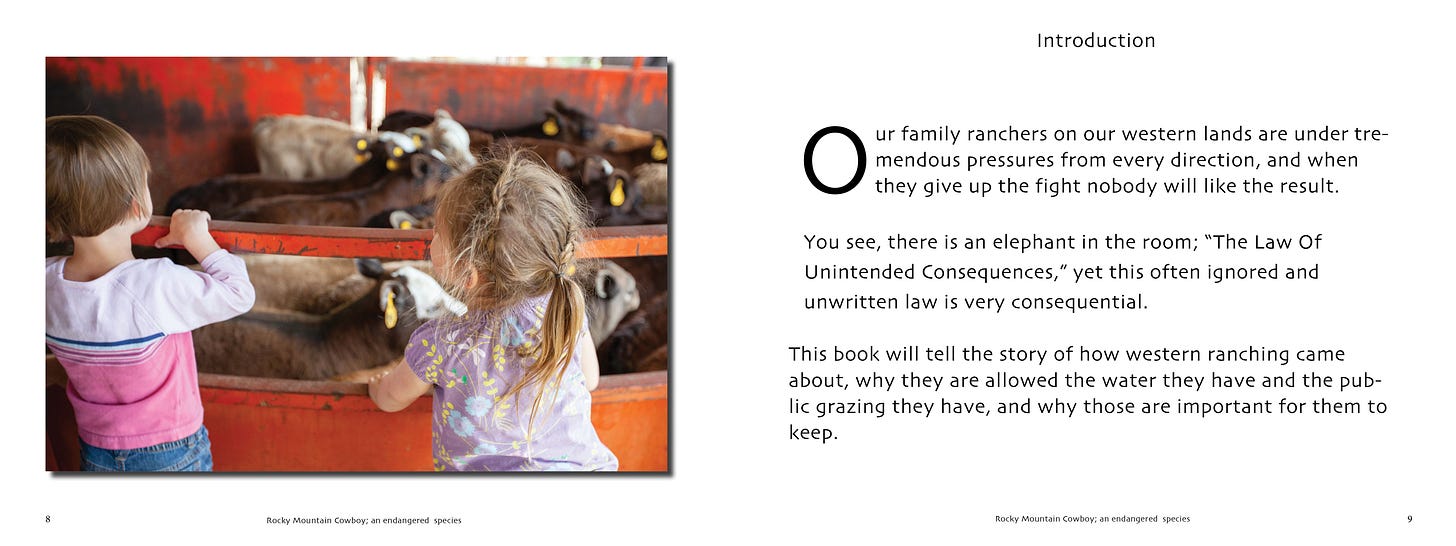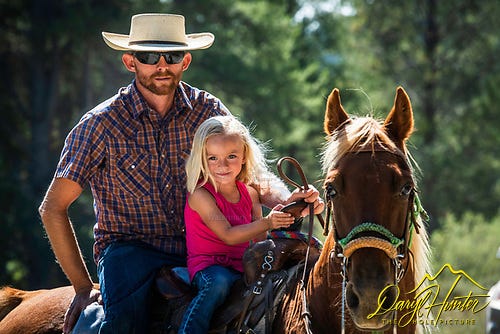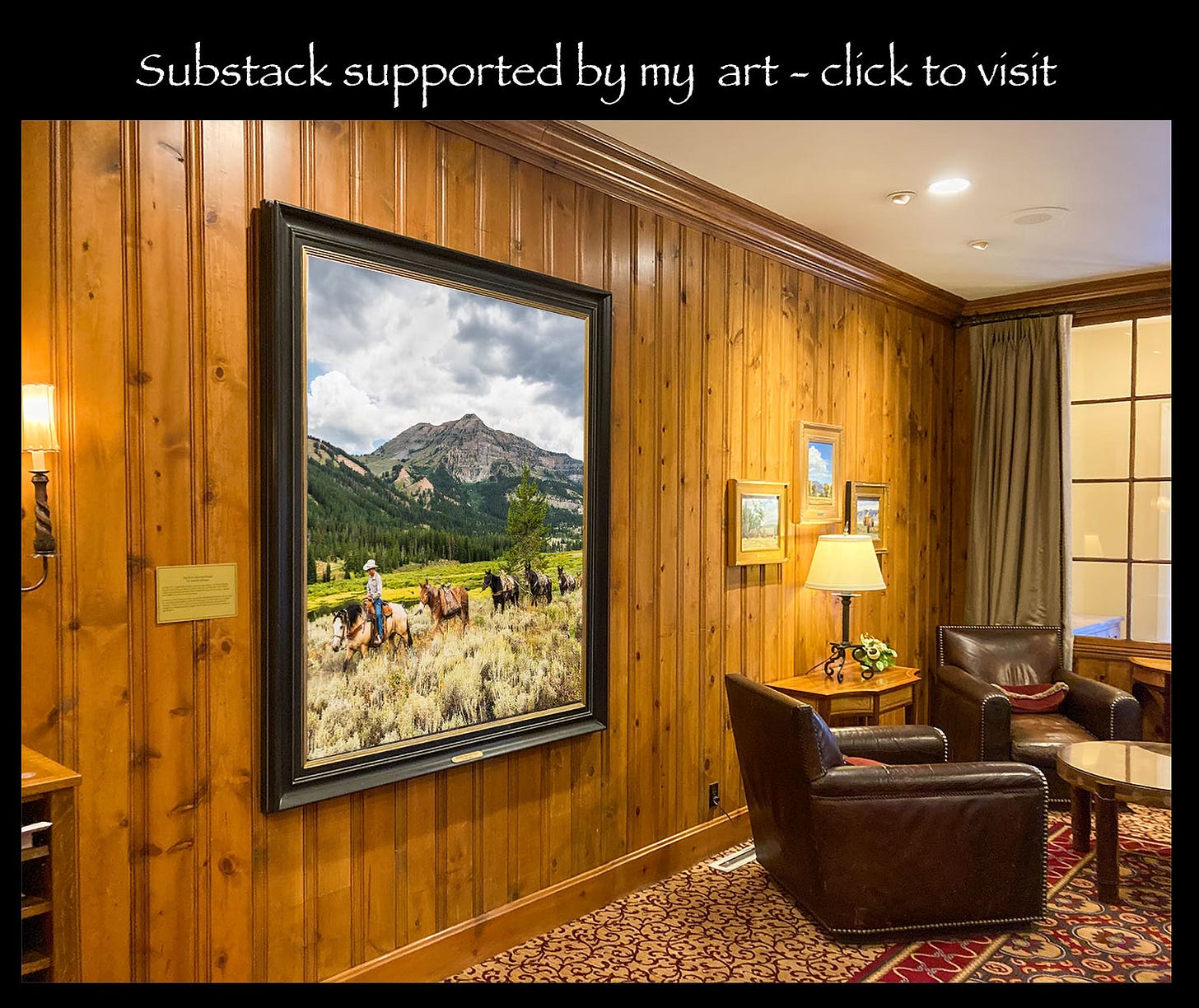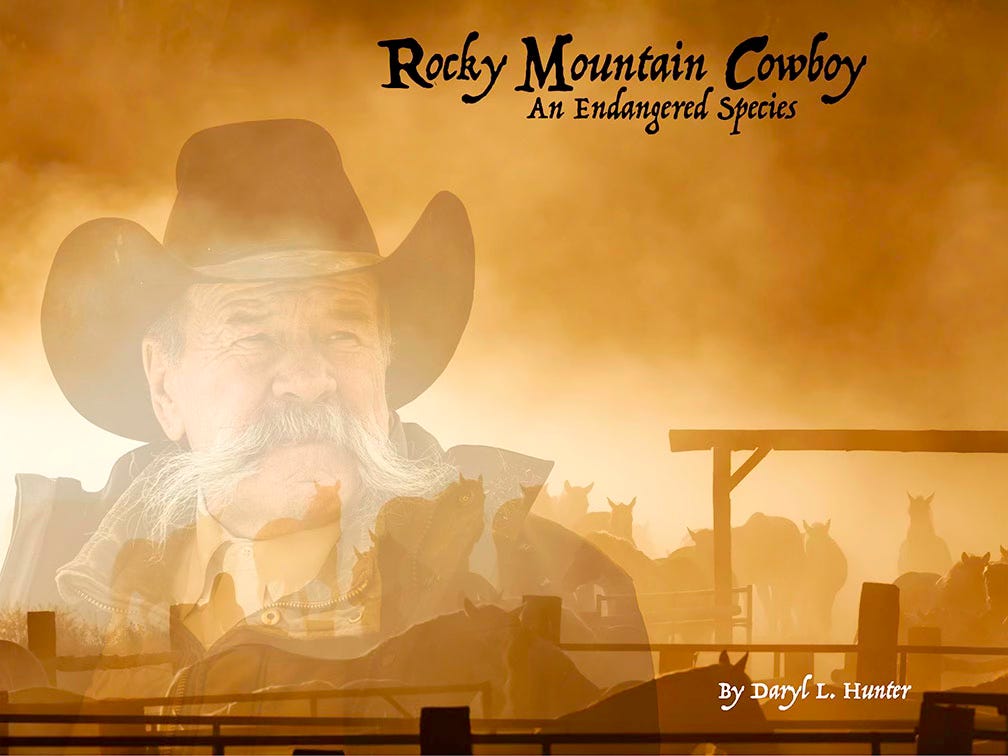The Public Grazing Conundrum
The face of the West is changing, what was once a frontier populated with hard scrabble farmers, loggers, miners, cowboys and ranchers has been infiltrated and is getting gentrified by interlopers
Original publication (2006) Jackson Hole weekly in my column (And Rightly So)
The face of the west is changing, what was once a frontier populated with hard scrabble farmers, loggers, miners, cowboys and ranchers has been infiltrated and is getting gentrified by interlopers from the cities that have a new plan for their adopted home, part of this plan is to end the grazing of our public multipurpose lands.
Cattle grazing on our public lands has not always been an issue. Until recently cattle grazing was a natural part of the culture of the West. Cowboys, Indians, tumbleweeds and cows were the first thing to come to mind when thinking of the west. For the last couple of decades this perception has been muddied, a battle has been raging between cattle ranchers and environmentalists. The battle is rife with mistrust and misunderstanding by all.
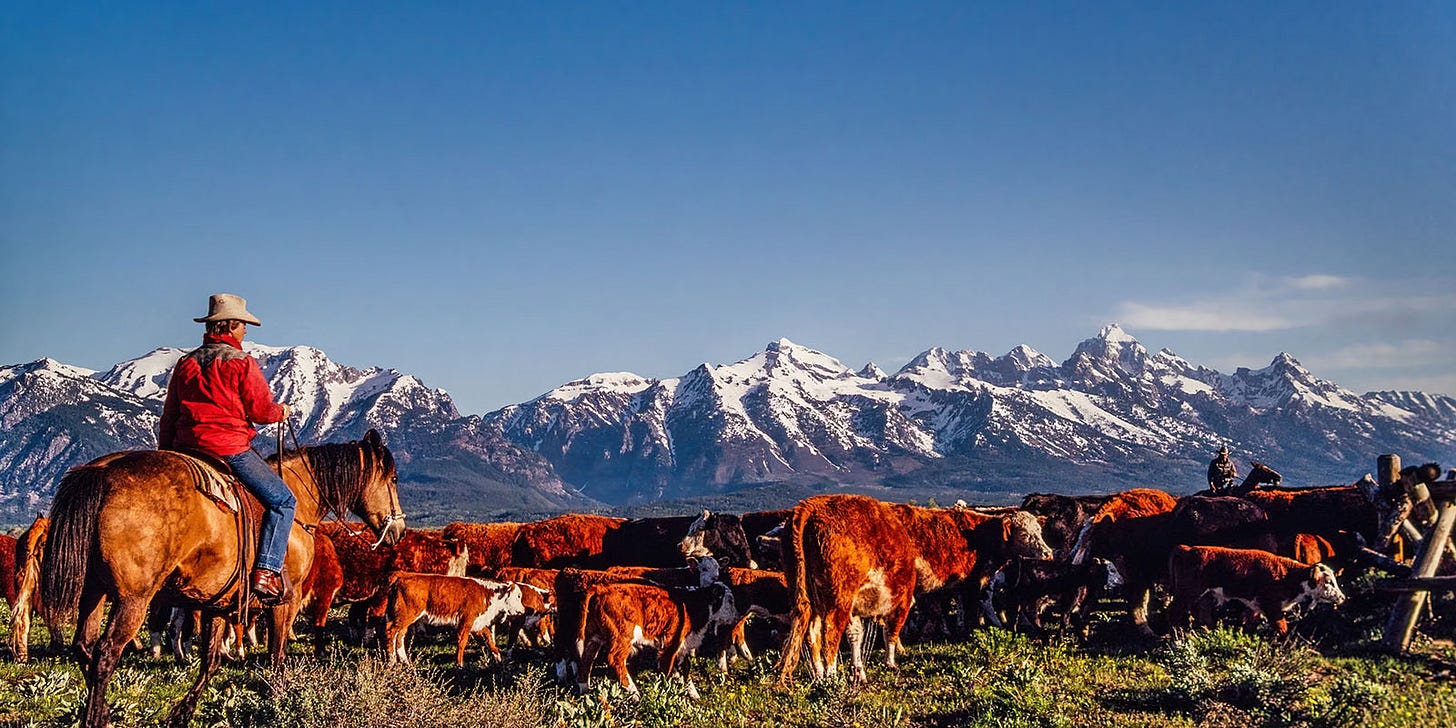
Jon Marvel's Western Watersheds Project (WWP) is the driving force to form the National Public Lands Grazing Campaign (NPLGC). The NPLGC is pushing Congress to authorize the voluntary buy-out and permanent retirement of federal grazing permits. The WWP and the NPLGC believe a payment of $175 per animal unit month (AUM); will reduce the contentious and adversarial conflicts concerning grazing interests and environmentalists on federal land.
The buy-outs are voluntary, but the buy-out amount being almost triple the average value per AUM of federal grazing permits in today's market provides a powerful bribe for ranchers to succumb to the temptation. A rancher with 300 cows that graze on public lands for five months of the year, will net the rancher a $262,500 settlement. Some say that this expenditure is sound because WWP's asserts $500 million annually is spent to administer public grazing will have a payback period of about six years after retirement of all grazing permits. The land area involved in 11 western states is about 270 million acres.
The General Accounting Office of the US government report concludes that federal agencies spent at least $144.3 million in direct and indirect expenditures to support grazing activities on federal lands in fiscal year 2004. A far cry from the WWP and NPLGC's asserted figure. According the GAO grazing fees generated about $21 million in fiscal year 2004 less than one-sixth of the expenditures to manage grazing.
The WWP and NPLGC theorize permanent elimination of federal administrative costs of public grazing land will produce savings after the initial six-year payback. While the financial benefits of such a program are easily asserted, the environmental value of the plan seems to them even greater. By ending the negative impacts of livestock grazing will result in a rapid recovery of degraded riparian areas and all wildlife species dependent on them.
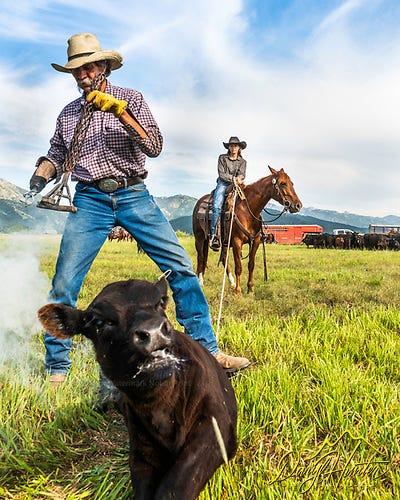
The WWP and NPLGC plan will change the face of public lands in the West. It will also greatly change the face of the private lands as well. Where there is great change there is also great opportunities for the law of unforeseen consequences
One unforeseen opportunity/ consequences that will result is millions of acres of previously useful hay production land of our western valleys that produced hay for the cattle that were grazed in the nearby public lands will have to find another use. These farms and ranches freshly freed from the bovine production industry will naturally evolve into something else, it isn't to hard to guess that the highest and most profitable use of land is to subdivide it for profit creating millions of buying possibilities for America's new insatiable appetite for rural living, and technology's facilitation for them to be able to do so. Public land ranching maintains open space. 107 million acres of private ranchland are tied into public land grazing. Without access to public land forage, these ranches would be forced to sell out.
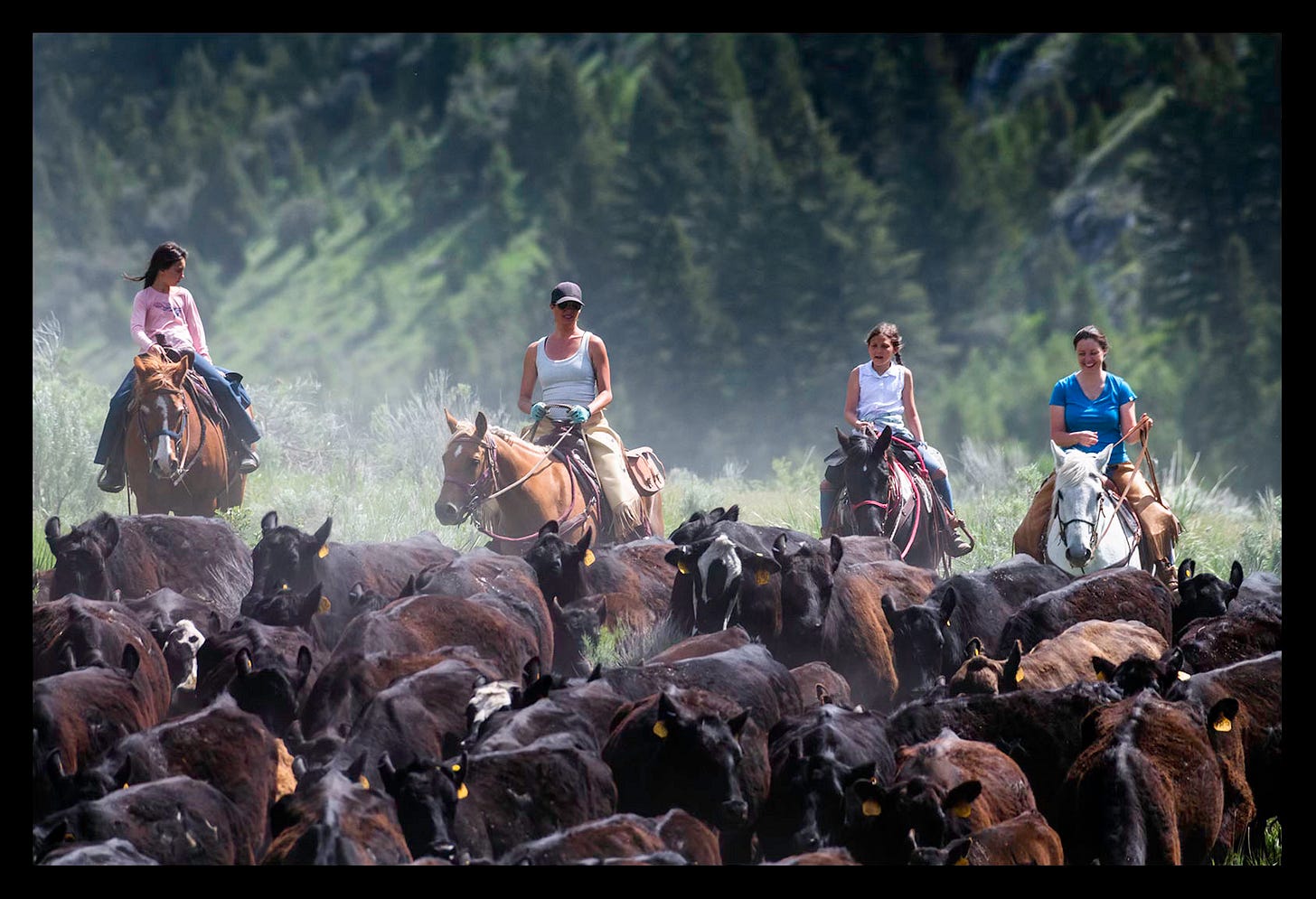
According to Rangelands Journal, 11,300 acres of farm and ranchland are lost to development each day. The greatest threat to biodiversity of plants and wildlife is fragmentation of habitat and public land ranching protects millions of acres of open habitat for rangeland species.
The influx of millions of gentleman farmers/ranchers will decimate wildlife much more than the evil cattleman did, every farmette will have a dog to see to it that no pesky grouse or other varmint is trespassing on the property. What the dog misses will be picked off by a 14 year-old with a 22. The exponential population growth will be matched with equal increased visitation to all the beautiful public places. And the NPLGC and the WWP thought that a cow was destructive force of nature.
Addendum/anecdote (2021)
Will our lack of foresight extinguish this cowgirl’s dreams that shines so bright in her eyes? Likely so, we seem to extinguish everything that is good.
We have all heard of the social media company Pinterest; well Pinterest in 2019 had a one million square foot building under contract to be built for them to rent customized to the Silicon Valley Image to important to project to attract smart people. During the pandemic they found nearly all their people could work from home. Considering this the happily payed a $89 million dollar cancelation few to get out of their contract.
How is this related to the public grazing debate you might ask? That one million square-feet of people can now live anywhere they want and will do so. You multiply that by a likely ten thousand companies who are now paying high city rent so are also dispersing their employees to anywhere those employees fancy. Because of supply and demand our alpine valleys and wide-open spaces are closing in exponentially faster than ever before. We will not like the result.





